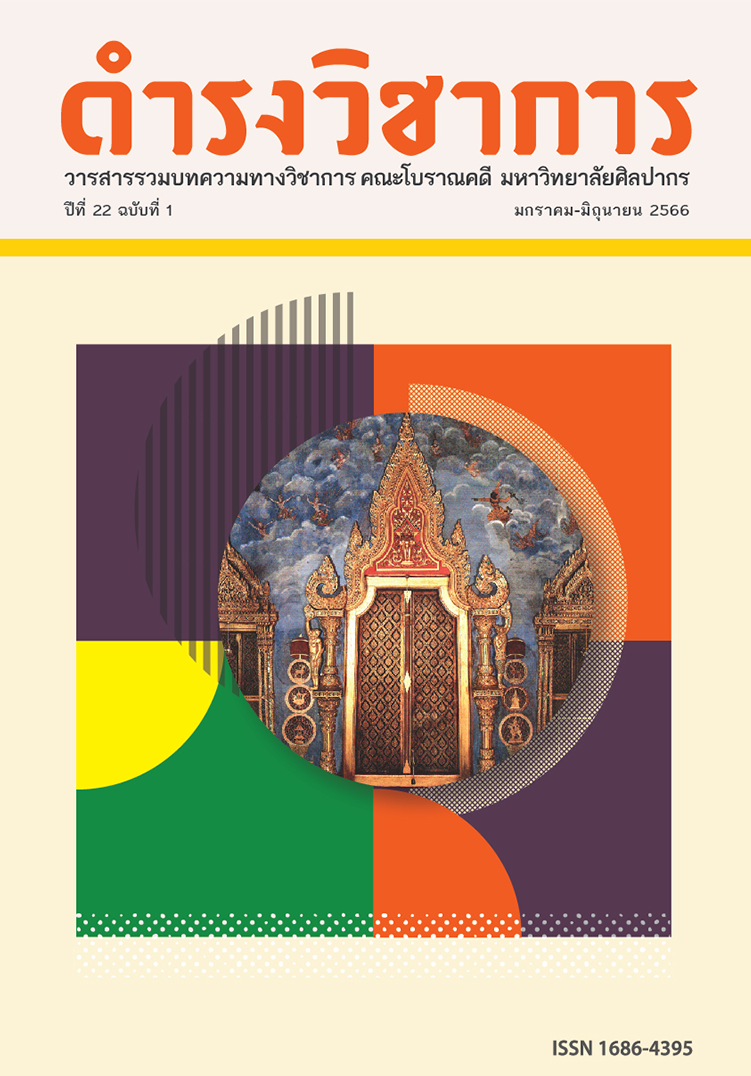Guideline for Developing French and German Learning Applications for Thai Learners
Keywords:
Applications, French Language, German Language, Mobile LearningAbstract
One of the online learning materials that many learners can easily access and use are applications that can be used on mobile devices such as smart phones. It is therefore crucially important to develop mobile applications that could motivate learners to engage with lessons. The researchers have set the objectives of this study as follows: 1) to present and discuss Thai French and German language-learners’ expectations towards features and content of French and German learning applications and 2) to propose a guideline for developing French and German learning applications which fit with Thai learners. The researchers collected the answers focusing on attitudes toward French and German language learning by using applications, their features and content, and exercises from 1,390 participants. The results show that participants exhibited positive attitudes toward French and German learning applications. The desired characteristics of applications suggested by French and German learners were in the same direction, namely complete content, interesting features, great useability, and a reasonable fee.
References
Chachil K., Engkamat A., Sarkawi A., & Shuib A. R. A., 2015. Interactive Multimedia-based Mobile Application for learning Iban language (I-MMAPS for learning Iban language). Retrieved September 10, 2021, from https://doi.org/10.1016/j.sbspro.2014.12.673
Gluchmanova M., 2015. Application of e-Learning in foreign language teaching at the Technical University. Retrieved September 10, 2021, from https://doi.org/10.1016/j.sbspro.2015.01.1053
Harun H., Massari N., & Behak F. B., 2014. Use of L1 as a mediational tool for understanding tense/aspect marking in English: An application of concept-based instruction. Retrieved September 20, 2020, from https://doi.org/10.1016/j.sbspro.2014.04.231
Holubnycha L. & Baibekova L., 2020. Modern technologies for university students’ language learning in pandemic. Retrieved May 21, 2021, from https://doi.org/10.18662/po/11.2/158
Horbatiuk L., Kravchenko N., Alieksieieva H., Lipych V., & Rozumna T., 2019. Use of mobile applications for foreign language lexical competence formation. Retrieved July 17, 2020, from https://doi.org/10.7596/taksad.v8i3.2093
Ibacache K., 2019. Use of language-learning apps as a tool for foreign language acquisition by academic libraries employees. Retrieved September 20, 2020, from https://doi.org/10.6017/ital.v38i3.11077
Kamenická J., 2021. Apple tree model of emotion-involved processing: Videos for emotions and foreign language learning. Retrieved February 10, 2022, from https://doi.org/10.15503/jecs2021.1.103.116
Klimova B., 2020. Benefits of the use of mobile applications for learning a foreign language by elderly population. Retrieved June 15, 2021, from https://doi.org/https://doi.org/10.1016/j.procs.2020.09.255
Lai Y., Saab N., & Admiraal W., 2022. University students’ use of mobile technology in self-directed language learning: Using the integrative model of behavior prediction. Retrieved February 10, 2022, from https://doi.org/10.1016/j.compedu.2021.104413
Oh E. Y., & Song D., 2021. Developmental research on an interactive application for language speaking practice using speech recognition technology. Retrieved February 10, 2022, from https://doi.org/10.1007/s11423-020-09910-1
Rouzbahani N., & Alipour M., 2019. On the differential effects of the teacher's L1 use or L2-only explanations on EFL learners' learning and retention of concrete and abstract words. Retrieved June 15, 2021, from
https://link.gale.com/apps/doc/A626926287/AONE?u=googlescholar&sid=googleScholar&xid=19235510
Sanda L. & Klimova B., 2021. Educational mobile applications for learning English as a second language by Czech seniors. Retrieved February 15, 2022, from https://doi.org/https://doi.org/10.1016/j.procs.2021.08.190.
Vo K.L.T., 2019. The first language (L1) as a mediational tool in peer interaction by EFL College students in Vietnam. Retrieved June 15, 2021, from https://doi.org/10.26459/hueuni-jssh.v128i6B.4764
Wang H., Du Y., Tsai S.-B., & Chai C., 2021. Evaluation of the effectiveness computer-assisted language teaching by big data analysis. Retrieved February 12, 2022, from https://doi.org/10.1155/2021/7143815
Zhao T. & Macaro E., 2016. What works better for the learning of concrete and abstract words: teachers' L1 use or L2-only explanations? Retrieved July 17, 2021, from
Downloads
Published
Issue
Section
License
Copyright (c) 2023 Damrong Journal of The Faculty of Archaeology Silpakorn University

This work is licensed under a Creative Commons Attribution-NonCommercial-NoDerivatives 4.0 International License.
บทความนี้เป็นผลงานของข้าพเจ้าแต่เพียงผู้เดียว และ/หรือเป็นผลงานของข้าพเจ้าและผู้ร่วมงาน ตามชื่อที่ระบุในบทความจริง และเป็นผลงานที่มิได้ถูกนำเสนอหรือตีพิมพ์ที่ใดมาก่อน





